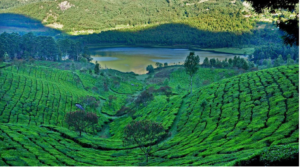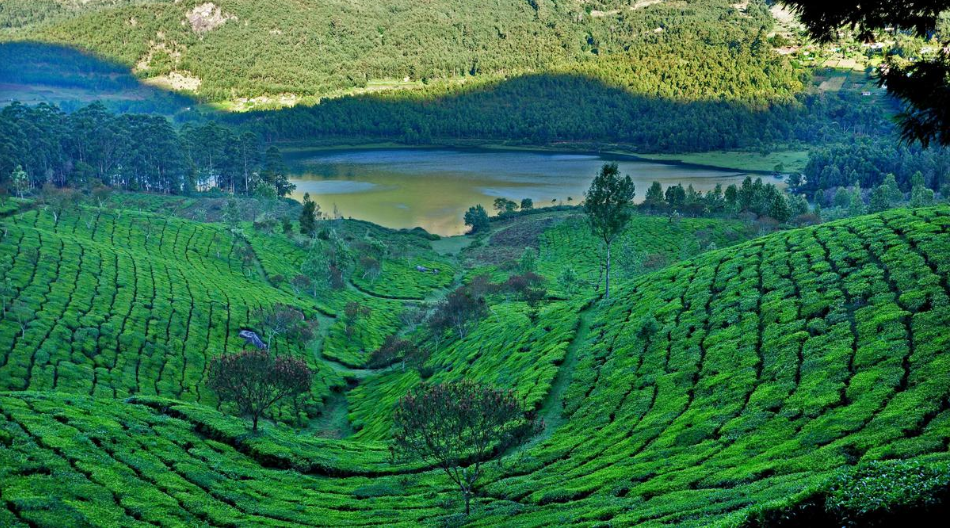Munnar, nestled in the picturesque Western Ghats of Kerala, is renowned for its misty hills, lush tea plantations, and cool climate. Winter typically heralds the arrival of frost-kissed mornings, transforming the landscape into a glistening spectacle. However, this year, Munnar experienced an unexpected anomaly as frost gave the hill station a miss for the first time in two decades. This article delves into the peculiarities of this phenomenon, its implications for the local ecosystem and economy, and the broader context of climate variability and change.
 for more information click on this link
for more information click on this link
Frost, a meteorological phenomenon characterized by the formation of ice crystals on surfaces, occurs under specific conditions of temperature, humidity, and atmospheric stability. In Munnar, where temperatures often dip below freezing during the winter months, frost is a common occurrence, particularly in higher altitude areas and exposed landscapes.
The crystalline beauty of frost-laden leaves, grass, and rooftops lends Munnar a magical allure, attracting tourists and photographers eager to capture nature’s ephemeral artistry. Moreover, frost plays a crucial role in agricultural practices, promoting vine dormancy, pest control, and nutrient cycling in tea plantations and other crops.
The absence of frost in Munnar for the first time in two decades has raised eyebrows and sparked discussions among residents, tourists, and climate scientists alike. Several factors may have contributed to this unusual occurrence:
- Climate data indicates that Munnar experienced milder winter temperatures this year compared to previous years, possibly due to broader climatic trends associated with global warming and climate variability. Warmer temperatures inhibit the formation of frost, leading to its conspicuous absence.
- Variations in atmospheric circulation patterns, such as the movement of air masses and the prevalence of weather systems, can influence local weather conditions, including the likelihood of frost formation. Anomalous weather patterns this year may have disrupted the conditions conducive to frost formation in Munnar.
- Microclimatic conditions within Munnar, including topography, land use changes, and urbanization, may have played a role in modulating temperatures and humidity levels, affecting the occurrence of frost in specific areas of the hill station.
The absence of frost in Munnar carries both ecological and economic implications, touching various aspects of the local environment and livelihoods:
- Frost plays a vital role in shaping ecological processes and biodiversity in Munnar’s fragile ecosystems. Its absence may disrupt natural cycles, alter species interactions, and influence the distribution and abundance of flora and fauna adapted to frost-prone conditions.
- The tea industry, which forms the backbone of Munnar’s economy, relies on frost as a natural phenomenon with significant implications for tea quality and yield. The absence of frost may affect tea cultivation practices, including pruning schedules, pest management strategies, and crop productivity.
- Munnar’s allure as a winter destination is closely tied to its reputation for frosty mornings and scenic beauty. The absence of frost may impact tourism patterns, visitor perceptions, and the hospitality sector’s revenue streams, potentially affecting local businesses and livelihoods dependent on tourism. Frost contributes to water availability and hydrological processes in Munnar by replenishing soil moisture, enhancing groundwater recharge, and sustaining stream flow. Its absence may have implications for water resources management, particularly in the context of changing precipitation patterns and hydrological regimes.
The absence of frost in Munnar serves as a poignant reminder of the complexities and uncertainties inherent in climate variability and change. While this phenomenon may be an isolated event, it underscores the need for proactive adaptation strategies and resilience-building measures to address the evolving challenges posed by a
- Continued monitoring of climate parameters, long-term data collection, and scientific research are essential for understanding trends, detecting anomalies, and predicting future climate scenarios. Collaborative efforts between meteorological agencies, research institutions, and local stakeholders can enhance climate resilience and inform adaptive strategies.
- Meaningful engagement with local communities, indigenous knowledge holders, and marginalized groups is critical for developing context-specific adaptation plans, promoting climate literacy, and building community resilience to climate impacts.
- Investing in ecosystem-based adaptation approaches, such as watershed management, afforestation, and biodiversity conservation, can enhance ecosystem resilience, support livelihoods, and mitigate the impacts of climate change on vulnerable communities.
- Integrating climate considerations into land use planning, infrastructure development, and natural resource management policies is essential for promoting sustainable development and reducing climate vulnerability. Adaptive governance frameworks that prioritize inclusivity, equity, and social justice are crucial for fostering climate-resilient communities and ecosystems.
The absence of frost in Munnar after two decades serves as a poignant reminder of the dynamic nature of climate variability and change. While this phenomenon may be an isolated event, its implications for the local ecosystem, economy, and livelihoods underscore the urgency of climate action and adaptation. As Munnar navigates the uncertainties of a changing climate, proactive measures, community engagement, and ecosystem-based approaches are essential for building resilience, safeguarding biodiversity, and ensuring sustainable development for generations to come. Only through concerted efforts and collective action can we address the complex challenges posed by climate variability and chart a course towards a more resilient and sustainable future.





